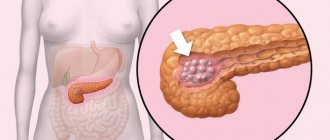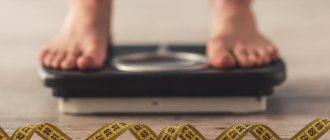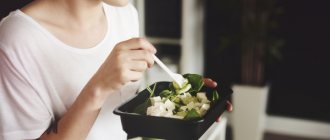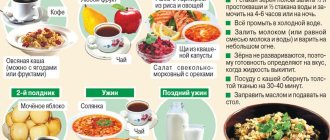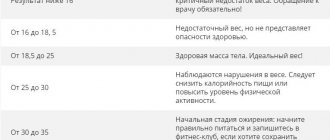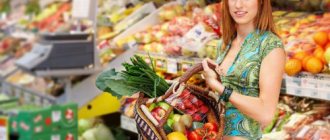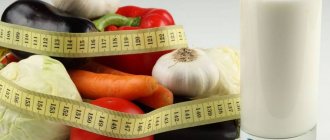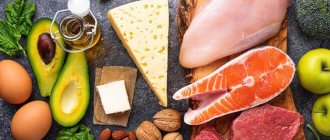General rules
The basis of pancreatic disease is an inflammatory process with degenerative changes in the parenchyma of the organ, which in acute pancreatitis can lead to pancreatic necrosis , and in a chronic, often recurrent form - to the development of fibrosis of the parenchyma and sclerosis of the gland tissue. In this case, the digestive function of the gland (mainly proteins) is disrupted, and then the intrasecretory function, in which the insular apparatus is involved in the pathological process, which is manifested by a violation of carbohydrate metabolism and the development of hyperglycemia , glucosuria .
The main symptoms of the disease: nausea, an attack of pain (acute girdling or radiating to the left half of the lower back or chest), general weakness, bloating , diarrhea , vomiting, increased body temperature and, much less frequently, jaundice . Treatment of pancreatitis is complex, the most important component of which is nutritional therapy. Moreover, it is proper therapeutic nutrition that can normalize metabolic processes in the body, including the pancreas, and improve its function.
Diet for pancreatic disease, basic principles
A diet for pancreatic disease should, first of all, be aimed at reducing pain, reducing the secretory function of the pancreas, reducing hyperenzymemia , and restoring impaired metabolic . The basic principles of diet therapy for patients with acute/chronic pancreatitis in the acute stage include:
- hunger and parenteral nutrition with pronounced metabolic and clinical signs of the presence of an autolytic process in the pancreas;
- transferring the patient to a nutritious diet as soon as possible (especially regarding protein levels);
- gradual expansion of the diet by including new foods and dishes in the diet;
- a gradual increase in caloric intake and the volume of the daily diet as the diet expands;
- ensuring maximum protection of the pancreas and gastrointestinal tract from adverse factors.
Along with bed rest and drug treatment in order to reduce the secretion of enzymes of the stomach and pancreas, a patient with acute/chronic pancreatitis in the acute stage is prescribed a 2-3 day fast. During this period, it is allowed to drink non-carbonated Borjomi mineral water at room temperature, 250 ml fractionally 4-5 times - a total of 1-1.5 l/day and rosehip decoction (1-2 glasses).
From the 3rd day, in case of mild pancreatitis, patients are prescribed the pureed (first) version of Diet No. 5P . The diet is low-calorie (1500-1800 Kcal: 60-80 g of proteins (25 g of animal proteins), 50-60 g of fats, 200-300 g of carbohydrates), as gentle as possible, the daily diet includes products that provide the physiological norm of protein with a sharp limitation in diet of fats and easily digestible carbohydrates.
Refractory fats and simple carbohydrates (honey, sugar, confectionery, jam) are limited. Avoid foods that stimulate the secretion of pancreatic juice and contain a lot of fiber.
The menu includes dishes of semi-viscous, liquid and semi-liquid consistency; 50 g white crackers; 5–6 g of table salt: these are cereal soups with a weak vegetable broth or water (slimy or thoroughly pureed), cream soup made from well-cooked meat; steam cutlets, soufflé, quenelles; soft-boiled chicken eggs, egg white omelet (1-2 per week); steam pudding made from fresh cottage cheese; puddings/purees from steamed vegetables (cauliflower, zucchini, potatoes, carrots), pureed porridge with water, jelly, jellies, pureed fresh/dried fruit compotes, mousses with aspartame , fructose , weak tea, rosehip decoction; Butter is added to prepared dishes.
It is prohibited to introduce other foods and dishes into the diet. The drinking regimen for patients is 2 l/day of free fluid. Meals for pancreatic disease are fractional (6–8 times/day), the volume of food consumed in one serving is no more than 300 g.
After 5-10 days, when the exacerbation subsides, the patient is transferred to the untreated (second) version of the 5P Diet , which the patient must follow throughout the entire period of the disease and the transition to the stage of stable clinical remission (3-12 months). Its goal is to prevent relapses and progression of pancreatitis, correcting nutritional disorders that have arisen.
The basis of the diet during the period of subsiding exacerbation and the stage of remission in chronic pancreatitis is an increased content of protein in the diet (110–120 g/day, 60% animal proteins) with a sharp restriction of fats to 60–70 g/day (20% vegetable ), and in some cases (with severe steatorrhea) up to 30–50 g/day and limiting carbohydrates to 300 g/day, mainly mono- and disaccharides, and in cases where diabetes mellitus they are completely excluded.
It is also strictly forbidden to include in the diet foods that stimulate the secretion of digestive juices and are rich in extractive substances. vitamins to the diet of such patients . The amount of table salt is reduced to 6–8 g/day. The energy value of this version of Diet No. 5P is 2500-2700 Kcal.
The menu and range of products in the second version of the diet have been expanded. The diet includes dried wheat bread or crackers up to 200-300 g per day. Vegetable soups with the exception of cabbage and cereal soups (except millet), also with the addition of vermicelli, are allowed. Outside the period of exacerbation, you can add a little sour cream or butter. Meat dishes are prepared from lean varieties of meat or poultry in boiled form (meatballs, cutlets, dumplings, rolls, mashed potatoes), fish dishes from lean river fish in pieces or steamed, boiled, chopped; chicken eggs only in the form of a white omelet; Among fats, it is allowed to consume vegetable oils (olive, sunflower) and unsalted butter.
Dairy products are presented in the diet in the form of homemade non-sour cottage cheese, mild cheese, and fermented milk products. Potatoes, beets, carrots, zucchini, and pumpkin are introduced into the diet as vegetables and dishes made from them. xylitol jelly , weak tea, and a decoction of wheat bran and rose hips are allowed.
treatment with diet for symptoms of severe insufficiency of the exocrine function of the pancreas (syndrome of impaired absorption and digestion, steatorrhea ) with the use of specialized products for dietary nutrition - pureed and homogenized products from veal, beef, chicken meat, beef tongues, vegetables and fruits.
After operations on the pancreas (especially often with a cyst, which is a tumor - a capsule with liquid contents), the passage of contents through the intestines is disrupted, which contributes to the development of dysbiosis and constipation . Signs of malabsorption are often absent. In such cases, the basic Diet 5 for the pancreas is modified. The diet increases the content of vegetables and unsweetened fruits, and reduces the amount of easily digestible carbohydrates to avoid fermentation and flatulence .
For pancreatic lipomatosis Table No. 5 according to Pevzner. Diet for exacerbation and deterioration of the patient’s condition who is in remission - the first version of Table 5P . At the same time, during an exacerbation, nutrition should be started again with a period of fasting.
Diet for chronic inflammation of the gland
For a disease such as pancreatitis, a gentle diet is prescribed, which completely excludes the consumption of alcoholic beverages, sweet, fatty, fried foods, as well as foods containing coarse fiber, simple carbohydrates, and extractives. Nutritionists recommend eating food up to 6 times a day; the serving size should be small so that it is better absorbed and does not overload the pancreas.
If you have a disease of the pancreas, it is forbidden to eat any food that increases the production of enzymes designed to break down food. Food should be steamed, boiled or stewed, in rare cases it can be baked. Before use, it must be cooled to a temperature of 30 degrees. This way you can avoid stomach irritation.
Salt in the diet should be used in a minimal amount, and if possible, then eliminate it completely until the functioning of the organ returns to normal. The main products used are fish, meat, and dairy products. The energy value of the menu per day should in no case exceed 1800 kcal.
It is best to give preference to liquid or semi-liquid foods, for example, soups, purees, cereals, etc. A strict diet for pancreatic disease must be followed for about 3 weeks after the attack has stopped. After this, the menu can constantly expand until you return to your usual diet.
During the diet, it is allowed to eat cereals, vegetable soups, boiled/fresh vegetables, dried bread, meat, boiled eggs, poultry and fish (only low-fat varieties are allowed), fermented milk products, non-acidic berries and fruits, flour products, butter/vegetable oil, natural jelly, fresh juices and compotes.
Under no circumstances should you forget about water. It is recommended to drink up to 2 liters of clean water per day. It will restore balance and improve bowel function.
During the period of exacerbation of the disease, the consumption of carbonated water should be minimized or completely eliminated. In addition, canned food, strong broths, fast food, smoked/spicy foods, buns, cocoa, sour berries and fruits, marinades, coffee, pies, scrambled or soft-boiled eggs, fatty waste meats, fish.
It is important to firmly remember that any violations of the diet will immediately make themselves felt as a deterioration in health and renewed inflammation of the pancreas.
Varieties
If there are problems with the appearance of clinical signs of diabetes mellitus , diet therapy is adjusted taking into account impaired carbohydrate metabolism, approaching the physiological norm of nutrition as much as possible. In such cases Diet 5P/9 , which excludes in the diet:
- purines (extractive nitrogenous substances);
- foods that promote bloating and fermentation processes in the intestines (cabbage, legumes);
- products formed during the frying process;
- foods rich in lipotropic substances and calcium;
- products containing a lot of essential oils and irritating the mucous membrane of the digestive tract (pepper, onion, garlic);
- salt - up to 6 g per day.
In terms of energy value and nutrient composition, the main diet for diabetes mostly coincides with the 5P Diet , however, the latter is more gentle. In terms of nutritional composition, Diets 5P and 5P/9 are identical. 5-6 meals a day are prescribed, simple carbohydrates are excluded from the diet by increasing the fiber content (bran, pectin), and more than 50% of fats should be vegetable fats. Small meals throughout the day equalize the relationship between blood glucose and insulin .
In the diet, up to 50% of the daily energy requirement should be covered by the carbohydrate portion of the diet. For this purpose, sweeteners are widely used - xylitol , sorbitol , saccharin , aspartame , taking into account individual tolerance.
The diet includes foods containing complex carbohydrates: bread, cereals (excluding semolina and rice); fruits, berries and vegetables that contain less than 5 g of carbohydrates per 100 g of product (cucumbers, zucchini, cauliflower) and vegetables/fruits containing 5-10 g of carbohydrates per 100 g of product (beets, carrots, oranges, tangerines) are limited. The ability of any food to increase blood glucose levels is characterized by the glycemic index . And the lower the index, the more suitable this product is for a patient with diabetes.
There is a special table containing the necessary information, using which the patient can navigate when choosing products. The fat content in the diet of such patients should be less than the physiological norm due to the exclusion of refractory animal fats and foods containing a lot of cholesterol (geese, ducks, pork, liver, lamb, brains, yolks). The 5P/9 diet should contain a sufficient amount of vitamins, especially thiamine (vitamin B1), which is actively involved in carbohydrate metabolism, as well as myco/macroelements.
Authorized Products
The diet of patients with pancreatitis includes dried bread, unsweetened cookies and white wheat crackers in a total volume of 200-300 g/day, pureed or slimy cereal/vegetable soups with vermicelli, noodles with the addition of butter or sour cream. The diet must include lean meat (rabbit, lean young lamb, beef), boiled or steamed poultry (chicken, turkey), steamed, boiled or baked rabbit (mashed potatoes, cutlets, dumplings, soufflé, roll).
During the period of remission, lean meat, rabbit, and chicken can be served boiled in pieces. Fish dishes are prepared from low-fat varieties of fish (cod, pike, icefish, perch, pike perch, carp) boiled, chopped or in pieces. Chicken eggs are included in the diet in the form of a soft-boiled egg or a steam omelet (up to 2 eggs per day).
It is important to include in the diet dairy dishes and especially non-acidic cottage cheese (preferably homemade), as well as dishes based on it - puddings, casseroles. As side dishes, the diet should include porridge from various cereals and viscous or pureed pasta, vermicelli, homemade noodles, pasta, which is prepared with the addition of milk in a ratio (1:1) or in water.
For vegetable side dishes, beets, carrots, cauliflower, young beans, and boiled, baked or pureed pumpkin are recommended. Fats are mainly unsalted butter and refined vegetable oils, which are added directly to prepared dishes. Sweet dishes in the diet include compotes from pureed fresh and dried fruits, jellies, jelly, mousses from juices with sorbitol or xylitol. Non-carbonated mineral water, rosehip decoction, unsweetened fruit juices, and weak tea with lemon are used as drinks.
Table of permitted products
| Proteins, g | Fats, g | Carbohydrates, g | Calories, kcal | |
Vegetables and greens | ||||
| zucchini | 0,6 | 0,3 | 4,6 | 24 |
| cauliflower | 2,5 | 0,3 | 5,4 | 30 |
| potato | 2,0 | 0,4 | 18,1 | 80 |
| carrot | 1,3 | 0,1 | 6,9 | 32 |
| cucumbers | 0,8 | 0,1 | 2,8 | 15 |
| pumpkin | 1,3 | 0,3 | 7,7 | 28 |
| green beans | 2,0 | 0,2 | 3,6 | 24 |
Fruits | ||||
| apples | 0,4 | 0,4 | 9,8 | 47 |
Cereals and porridges | ||||
| buckwheat (kernel) | 12,6 | 3,3 | 62,1 | 313 |
| semolina | 10,3 | 1,0 | 73,3 | 328 |
| cereals | 11,9 | 7,2 | 69,3 | 366 |
| pearl barley | 9,3 | 1,1 | 73,7 | 320 |
| white rice | 6,7 | 0,7 | 78,9 | 344 |
| barley grits | 10,4 | 1,3 | 66,3 | 324 |
Flour and pasta | ||||
| pasta | 10,4 | 1,1 | 69,7 | 337 |
| noodles | 12,0 | 3,7 | 60,1 | 322 |
Bakery products | ||||
| white bread crackers | 11,2 | 1,4 | 72,2 | 331 |
| wheat bread | 8,1 | 1,0 | 48,8 | 242 |
Confectionery | ||||
| fruit and berry marmalade | 0,4 | 0,0 | 76,6 | 293 |
| paste | 0,5 | 0,0 | 80,8 | 310 |
| Maria cookies | 8,7 | 8,8 | 70,9 | 400 |
Raw materials and seasonings | ||||
| milk sauce | 2,0 | 7,1 | 5,2 | 84 |
Dairy | ||||
| skim milk | 2,0 | 0,1 | 4,8 | 31 |
| kefir | 3,4 | 2,0 | 4,7 | 51 |
| sour cream | 2,8 | 20,0 | 3,2 | 206 |
| curdled milk | 2,9 | 2,5 | 4,1 | 53 |
Cheeses and cottage cheese | ||||
| cottage cheese 1.8% (low-fat) | 18,0 | 1,8 | 3,3 | 101 |
Meat products | ||||
| boiled veal | 30,7 | 0,9 | 0,0 | 131 |
| rabbit | 21,0 | 8,0 | 0,0 | 156 |
Bird | ||||
| boiled chicken breast | 29,8 | 1,8 | 0,5 | 137 |
| boiled turkey fillet | 25,0 | 1,0 | — | 130 |
Eggs | ||||
| chicken eggs | 12,7 | 10,9 | 0,7 | 157 |
Fish and seafood | ||||
| cod | 17,7 | 0,7 | — | 78 |
| hake | 16,6 | 2,2 | 0,0 | 86 |
Oils and fats | ||||
| vegetable oil | 0,0 | 99,0 | 0,0 | 899 |
| butter | 0,5 | 82,5 | 0,8 | 748 |
Juices and compotes | ||||
| juice | 0,3 | 0,1 | 9,2 | 40 |
| rose hip juice | 0,1 | 0,0 | 17,6 | 70 |
| * data is per 100 g of product | ||||
Allowed and recommended
Products for pancreatitis (the list of allowed foods is drawn up in advance, taking into account the form of the disease) are selected so that their biochemicals do not irritate the pancreas tissue. In case of chronic or acute pancreatitis, which is in a state of remission or exacerbation, it is recommended to eat the following foods.
For acute pancreatitis
The acute form of the disease requires temporary exclusion of food. To exclude the factor of intoxication and further death of the pancreas, the patient is prescribed therapeutic fasting, the average duration of which is 5 days.
On the 6th day of treatment, subject to positive dynamics towards recovery, the following food products are included in the patient’s diet:
- slimy soup prepared on the basis of wheat, buckwheat, barley, rice, cereals, which have been boiled until a homogeneous mass is formed;
- lean river fish, which was steamed and then pureed using a blender to form a pate;
- fresh kefir, which has not yet acquired increased acidity;
- cauliflower, steamed and then pureed;
- chamomile tea with a small amount of honey (no more than 1 teaspoon per day);
- omelette, which is steamed without the use of fats of animal and vegetable origin (no more than 1 chicken egg per day is allowed);
- mashed potatoes, to which no more than 100-150 ml of boiled milk is added (in case of acute pancreatitis, it is forbidden to use butter, lard, lard);
- rabbit liver, boiled in a steam bath and minced to form a pate;
- mineral water Essentuki, Borjomi, Bobruisk, Novopolotsk;
- boiled carrots, zucchini, broccoli, from which they subsequently make puree;
- oat flakes, boiled to a jelly state (the cereal base is used as food, as well as the thick and viscous liquid formed during the preparation of oats);
- low-fat yogurt without chemical dyes and flavorings;
- fresh whey, which is a by-product during the cooking process of cheese and cottage cheese.
All dishes prepared from the above food products provide the patient’s body with a sufficient amount of vitamins, minerals, proteins and carbohydrates.
At the same time, they do not irritate the pancreas and promote the restoration of its tissue. The average weight of a serving of dishes prepared from these products should be no more than 250-300 g. Meals are taken 5-6 times a day
Products allowed during remission of pancreatitis
After restoring the secretory function of the pancreas and suppressing the inflammatory process, the following food products, as well as dishes prepared on their basis, are introduced into the patient’s diet:
- liquid semolina porridge with added granulated sugar;
- oatmeal, rice, buckwheat porridge, cooked in water with the addition of a small amount of butter;
- pureed vegetable soup, which is prepared without frying;
- boiled meat of turkey, rabbit, chicken, young calf, minced to a pate;
- boiled chicken egg or steamed omelette;
- non-sour berry jelly with added sugar;
- natural rye bread;
- army biscuits;
- sweet apples, which are grated (sour varieties of fruit should not be eaten, as they can cause an exacerbation of the disease);
- cabbage, zucchini, potatoes, carrots that were boiled in water, steamed or stewed in their own juice;
- skim boiled or pasteurized milk;
- kefir, fermented baked milk, low-fat sour cream, yogurt;
- not strong sweet tea;
- still mineral water;
- pike perch, perch, crucian carp, pike, carp, cooked in a steam bath.
During the period of remission of pancreatitis, the patient must follow the same principles of rational nutrition as in the acute form of the disease. The main goal of a therapeutic diet is to maintain stable functioning of the organ and prevent another exacerbation of the disease.
Products allowed for chronic pancreatitis
Products for pancreatitis (a list of allowed dishes is drawn up in advance, and a daily menu is formed on its basis) must be natural and do not contain food chemicals. The chronic form of the disease makes it possible to make the patient’s diet more varied, but still requires gastronomic restrictions.
In case of chronic pancreatitis, the following types of foods are allowed to be consumed:
- buckwheat, semolina, rolled oats, pearl barley, corn, wheat, barley, rice cereals (porridges and soups are prepared on their basis, and dishes are seasoned with butter);
- potatoes (this vegetable can be eaten whole or in puree form, but must be cooked);
- low-fat chicken broth;
- vegetable soup prepared without the use of animal and vegetable fats;
- river fish cooked in a steam bath;
- chicken, turkey, beef, rabbit, veal meat, boiled in water, steamed or stewed in its own juice;
- vegetable stew, which is prepared by baking carrots, zucchini, eggplant, potatoes, and cauliflower in the oven (the dish can also be prepared by stewing);
- cottage cheese, milk, low-fat sour cream, kefir, yogurt, yogurt;
- bananas, sweet apples and pears, strawberries, raspberries, avocados;
- boiled liver of rabbit, calf, chicken, pig;
- soft-boiled eggs, omelet in a steam bath;
- stale white and rye bread (no more than 2-3 pieces per day);
- oat cookies;
- chamomile tea without sugar;
- mineral water Borjomi, Essentuki-17, Bobruisk, Novopolotsk, but without carbon dioxide;
- sweet dried fruit compote;
- fruit jelly (prepared from sweet berries with a minimum level of acidity);
- pasta seasoned with a little butter.
For chronic pancreatitis, the daily menu should include at least 1 liquid dish. Do not eat food that is too hot or cold. The average food temperature should be 30 degrees.
The principle of fractional nutrition with eating up to 5-6 meals is mandatory. once a day. The weight of 1 serving should not exceed 300 g. Failure to comply with dietary standards can trigger the transition of the disease from a chronic to an acute form of development.
Fully or partially limited products
It is prohibited to use soups with meat/mushroom/fish broth in the diet. Excluded are pork, lamb, goose, duck, fried foods, solid refractory animal fats (lard, cooking fats), smoked meats, canned fish/meat, salted and fatty fish, sausages, fresh bread, chum salmon caviar, stellate sturgeon, sturgeon, salmon, catfish, carp, pickles, marinades, spices, mushrooms.
Spicy and fatty snacks, whole milk, strong tea, fatty cottage cheese, coffee, cranberries, cocoa, chocolate, mature legumes, sorrel, spinach, lettuce, radishes, turnips, raw vegetables and fruits are prohibited. Fried or hard-boiled chicken eggs, flour and confectionery products, garlic, sorrel, radishes, green onions, white cabbage, rye bread, carbonated drinks, spinach, cold dishes and drinks, any dough (butter, puff pastry), ice cream, and alcoholic drinks.
Table of prohibited products
| Proteins, g | Fats, g | Carbohydrates, g | Calories, kcal | |
Vegetables and greens | ||||
| vegetables legumes | 9,1 | 1,6 | 27,0 | 168 |
| eggplant | 1,2 | 0,1 | 4,5 | 24 |
| swede | 1,2 | 0,1 | 7,7 | 37 |
| cabbage | 1,8 | 0,1 | 4,7 | 27 |
| sauerkraut | 1,8 | 0,1 | 4,4 | 19 |
| green onion | 1,3 | 0,0 | 4,6 | 19 |
| bulb onions | 1,4 | 0,0 | 10,4 | 41 |
| cucumbers | 0,8 | 0,1 | 2,8 | 15 |
| canned cucumbers | 2,8 | 0,0 | 1,3 | 16 |
| salad pepper | 1,3 | 0,0 | 5,3 | 27 |
| white radish | 1,4 | 0,0 | 4,1 | 21 |
| turnip | 1,5 | 0,1 | 6,2 | 30 |
| canned tomatoes | 1,1 | 0,1 | 3,5 | 20 |
| horseradish | 3,2 | 0,4 | 10,5 | 56 |
| spinach | 2,9 | 0,3 | 2,0 | 22 |
| sorrel | 1,5 | 0,3 | 2,9 | 19 |
Fruits | ||||
| bananas | 1,5 | 0,2 | 21,8 | 95 |
| figs | 0,7 | 0,2 | 13,7 | 49 |
Berries | ||||
| grape | 0,6 | 0,2 | 16,8 | 65 |
| cranberry | 0,5 | 0,0 | 6,8 | 26 |
Mushrooms | ||||
| mushrooms | 3,5 | 2,0 | 2,5 | 30 |
Nuts and dried fruits | ||||
| dates | 2,5 | 0,5 | 69,2 | 274 |
Snacks | ||||
| potato chips | 5,5 | 30,0 | 53,0 | 520 |
Cereals and porridges | ||||
| corn grits | 8,3 | 1,2 | 75,0 | 337 |
| millet cereal | 11,5 | 3,3 | 69,3 | 348 |
Bakery products | ||||
| Rye bread | 6,6 | 1,2 | 34,2 | 165 |
Confectionery | ||||
| jam | 0,3 | 0,2 | 63,0 | 263 |
| jam | 0,3 | 0,1 | 56,0 | 238 |
| candies | 4,3 | 19,8 | 67,5 | 453 |
Ice cream | ||||
| ice cream | 3,7 | 6,9 | 22,1 | 189 |
Cakes | ||||
| cake | 4,4 | 23,4 | 45,2 | 407 |
Chocolate | ||||
| chocolate | 5,4 | 35,3 | 56,5 | 544 |
Raw materials and seasonings | ||||
| mustard | 5,7 | 6,4 | 22,0 | 162 |
| ginger | 1,8 | 0,8 | 15,8 | 80 |
| ketchup | 1,8 | 1,0 | 22,2 | 93 |
| mayonnaise | 2,4 | 67,0 | 3,9 | 627 |
| ground black pepper | 10,4 | 3,3 | 38,7 | 251 |
| chilli | 2,0 | 0,2 | 9,5 | 40 |
Dairy | ||||
| milk 4.5% | 3,1 | 4,5 | 4,7 | 72 |
| cream | 2,8 | 20,0 | 3,7 | 205 |
Meat products | ||||
| pork | 16,0 | 21,6 | 0,0 | 259 |
| salo | 2,4 | 89,0 | 0,0 | 797 |
| beef liver | 17,4 | 3,1 | 0,0 | 98 |
| beef kidneys | 12,5 | 1,8 | 0,0 | 66 |
| beef brains | 9,5 | 9,5 | 0,0 | 124 |
| bacon | 23,0 | 45,0 | 0,0 | 500 |
| ham | 22,6 | 20,9 | 0,0 | 279 |
Sausages | ||||
| dry-cured sausage | 24,1 | 38,3 | 1,0 | 455 |
| sausages | 10,1 | 31,6 | 1,9 | 332 |
| sausages | 12,3 | 25,3 | 0,0 | 277 |
Bird | ||||
| smoked chicken | 27,5 | 8,2 | 0,0 | 184 |
| duck | 16,5 | 61,2 | 0,0 | 346 |
| smoked duck | 19,0 | 28,4 | 0,0 | 337 |
| goose | 16,1 | 33,3 | 0,0 | 364 |
Fish and seafood | ||||
| dried fish | 17,5 | 4,6 | 0,0 | 139 |
| smoked fish | 26,8 | 9,9 | 0,0 | 196 |
| black caviar | 28,0 | 9,7 | 0,0 | 203 |
| salmon caviar granular | 32,0 | 15,0 | 0,0 | 263 |
| salmon | 19,8 | 6,3 | 0,0 | 142 |
| sturgeon | 16,4 | 10,9 | 0,0 | 163 |
| canned fish | 17,5 | 2,0 | 0,0 | 88 |
Oils and fats | ||||
| animal fat | 0,0 | 99,7 | 0,0 | 897 |
| cooking fat | 0,0 | 99,7 | 0,0 | 897 |
Non-alcoholic drinks | ||||
| bread kvass | 0,2 | 0,0 | 5,2 | 27 |
| cola | 0,0 | 0,0 | 10,4 | 42 |
| green tea | 0,0 | 0,0 | 0,0 | — |
| black tea | 20,0 | 5,1 | 6,9 | 152 |
| * data is per 100 g of product | ||||
Menu (power mode)
Since the time period for prescribing the pureed version of the diet is short (3-5 days) and it is prescribed in a hospital, it is more advisable to provide a nutrition menu for the non-mashed (without mechanical sparing) version of the 5P Diet, which should be followed for 6-12 months in case of pain and discomfort. It is necessary to organize split meals 5-6 times a day. For the whole day, the patient is allowed 200 g of wheat bread, 30-40 g of sugar (or 20-30 g of xylitol in sweet dishes) and 20 g of butter.
Monday
| Breakfast |
|
| Lunch |
|
| Dinner |
|
| Afternoon snack |
|
| Dinner |
|
| For the night |
|
Tuesday
| Breakfast |
|
| Lunch |
|
| Dinner |
|
| Afternoon snack |
|
| Dinner |
|
| For the night |
|
Wednesday
| Breakfast |
|
| Lunch |
|
| Dinner |
|
| Afternoon snack |
|
| Dinner |
|
| For the night |
|
Thursday
| Breakfast |
|
| Lunch |
|
| Dinner |
|
| Afternoon snack |
|
| Dinner |
|
| For the night |
|
Friday
| Breakfast |
|
| Lunch |
|
| Dinner |
|
| Afternoon snack |
|
| Dinner |
|
| For the night |
|
Saturday
| Breakfast |
|
| Lunch |
|
| Dinner |
|
| Afternoon snack |
|
| Dinner |
|
| For the night |
|
Sunday
| Breakfast |
|
| Lunch |
|
| Dinner |
|
| Afternoon snack |
|
| Dinner |
|
| For the night |
|
Features of nutrition for pancreatitis
Inflammation of the pancreas can be acute or chronic. Regardless of the type and stage of the disease, a mandatory part of therapy is adjusting the diet and following a certain diet. Pancreatitis always develops in several stages. At each of them, the patient is recommended to follow specific nutritional rules.
initial stage
Pain in the pit of the stomach and in the right hypochondrium can be symptoms of inflammation of the pancreas. The initial stage of pancreatitis is a period of exacerbation of the inflammatory process. The disease manifests itself with maximum symptoms (pain, attacks of vomiting and nausea, flatulence).
At this stage of the pathology, it is important to eliminate the load on the pancreas when digesting food. The best result in this case can only be achieved by fasting.
Nutrition Features:
- therapeutic fasting for two or three days;
- to avoid dehydration of the body, it is allowed to drink alkaline mineral water (necessarily without gas);
- For drinks, you can take rosehip decoction in small portions;
- fasting should be carried out under the supervision of a specialist.
Improvement stage
The improvement stage is manifested by a decrease in the intensity of pain symptoms (the patient’s body temperature stabilizes, flatulence becomes less pronounced, and there are no attacks of vomiting or nausea). At this stage of development of the pathology, it is allowed to resume nutrition, but subject to a number of restrictions and rules.
Food portions should be small, and it is better to divide food consumption into 7-8 times a day.
Nutrition Features:
- in the first days of improvement, the patient is allowed to eat slimy soups and pureed porridges;
- new food products are introduced into the menu gradually and in small quantities;
- the calorie content of dishes in the first days should not exceed 800 kcal (the indicator also increases gradually);
- You cannot eat food against your will (if the patient has no appetite, then you need to eat food in minimal portions, but more often);
- it is necessary to maintain a drinking regime (at least two liters of water per day);
- Dishes are allowed to be prepared only by cooking and steaming methods;
- the consistency of all dishes should be liquid or semi-liquid;
- protein steam omelet, meat and fish products can be introduced into the menu from the fourth day of improvement (meat should be low-fat varieties and chopped as much as possible);
- meat broths, corn and millet porridge, products that have a negative effect on the digestive tract are excluded from the diet.
Recovery
The recovery stage is the stage at which all symptoms of pancreatitis are relieved. The diet can be expanded, supplemented with vegetables, fruits, new drinks and dishes. When compiling the menu, the principles of the 5p Diet are taken as a basis. This dietary nutrition program implies a clear distinction between products into permitted and prohibited categories, the use of certain cooking methods and adherence to general rules that help prevent the exacerbation of pathology.
Nutrition Features:
- the consistency of the dishes may allow chopped options (applies to meat and fish);
- Do not eat too hot or cold food (maximum temperature - 50 degrees);
- the size of one serving is allowed to be increased to 250-300 g;
- meals are provided in fractions (5-6 times a day);
- it is allowed to introduce dairy and fermented milk products (with a reduced percentage of fat), stewed or baked vegetables and fruits into the diet;
- It is prohibited to consume canned food, lard, marinades, fatty and fried foods, mushrooms, sweet fruits, vegetables containing coarse fiber, sweets, fresh bread, carbonated drinks and alcohol;
- consumption of prohibited foods can cause an exacerbation of the inflammatory process.
Remission
The remission stage is a period during which there are no symptoms of pathology. At this stage, the menu can be expanded as much as possible, but in compliance with the general principles of the 5p Diet. The duration of remission directly depends on the patient’s proper nutrition.
Even a single consumption of prohibited foods (for example, fatty, fried, salty or spicy foods) can provoke a sudden attack of exacerbation of the inflammatory process.
Nutrition Features:
- compliance with the principles of fractional nutrition and food temperature;
- eating only foods that belong to the approved list;
- exclusion of all products from the prohibited list;
- you should not overeat or go hungry;
- The last meal should be taken three hours before bedtime.
Recipes
First meal
Vegetarian soup with zucchini
Vegetables: chop onions and carrots and simmer in a saucepan in water with added oil. Add water and potatoes, cook for 15 minutes. 5 minutes before the potatoes are ready, place the potatoes in the soup, add chopped zucchini, add salt and bring until ready. Sprinkle with herbs on the table and top with sour cream if desired.
Oatmeal soup with cauliflower
Chop carrots and onions in the usual way for soup, simmer in water with vegetable oil. Add water to the volume you need, add chopped potatoes. Boil for 15 minutes, add cauliflower, disassembled into inflorescences, and oat flakes. Cook for 5 minutes. Serve with chopped herbs.
Second courses
Chicken meatballs with mashed potatoes
Wash and cook the rice. Add an egg, rice, a little sautéed onion, and salt to the prepared minced chicken fillet. Knead thoroughly, form meatballs and bake in a mold with sour cream sauce.
Fish quenelles with milk sauce
Beat the fish fillet in a blender. Add wheat bread crumb soaked in milk or semolina. Mix everything and beat again. Gradually add a little cream and whipped egg white, add salt. Use two tablespoons to form quenelles from the dumpling mass, place them on a baking sheet and bake. Can be steamed. Serve with milk sauce.
Dessert
Lapshevnik with cottage cheese
Boil the noodles, add grated cottage cheese, sugar, egg and knead. Place in a suitable pan and bake in the oven until a rough crust forms. Serve with sour cream.
Cheesecakes with carrots and dried apricots
Grate the carrots and simmer with the addition of water and butter. Finely chop the dried apricots, add the grated cottage cheese, add the egg, sour cream, flour, dried apricots and carrots. Form cheesecakes from the curd and carrot mixture and bake them in the oven.
Comments from nutritionists
In order to prevent the development of chronic pancreatitis, therapeutic nutrition for pancreatic disease after acute pancreatitis must be observed for 6-12 months until stable clinical remission.
Many “advanced” patients with pancreatitis, trying to find alternative methods of treatment, mainly ask on the Internet whether and how they can treat the disease on their own and whether cleansing the pancreas with folk remedies is effective. Their desire, especially during pain, is understandable. However, it is necessary to warn that the authors of articles on the Internet, where there is a lot of all kinds of advice and recommendations (cleansing with buckwheat, treatment with kvass on celandine, flax seeds, juice therapy, and so on) do not bear any responsibility for them, and you may get an aggravation pancreatitis with all the ensuing consequences. Therefore, it is not recommended to use folk remedies without consulting a gastroenterologist.
Why do you need a diet?
The diet for inflammation of the pancreas is characterized by a large number of restrictions, especially in the initial stages of treatment of the pathology. However, the diet recommended for the recovery and remission stages includes a variety of foods that can be used to prepare many delicious dishes.
The main goal of the diet is to reduce the load on the digestive organs and improve the functional state of the pancreas. Allowed products contain a sufficient amount of useful substances. This diet does not cause harm to the body.
Reviews and results
For symptoms of pancreatic disease, treatment with diet gives positive results. The diet is gentle and compensates for the necessary protein needs. Meals are prescribed for a long period, and various methods of processing foods (boiling, baking, steaming) allow you to diversify the menu and, according to patients, it is not very boring.
Reviews from patients indicate that dietary nutrition is very important, and some note that they are constantly forced to follow a diet - deviations from it cause a deterioration in their health.
- “... In case of a mild exacerbation, if IVs are not needed, I do not go to the hospital, but carry out the treatment at home and include therapeutic nutrition. I know what to eat and what to exclude, since this is not the first time. The only way out is to give rest to the pancreas and remove broths, fatty and fried foods. The transition to steamed and baked dishes is immediately felt: bloating and discomfort in the left hypochondrium disappear. I tolerate all porridges well, I don’t even exclude boiled vegetables, so the diet is quite complete and not difficult to follow. I try to hold out for a month or two and during this time I also lose weight”;
- “... When my pancreas hurts and mushy stools appear, I switch to this diet. The first time I was in the hospital, they told me to stick with it for at least a year. Dietary restrictions affected my weight, I lost 6 kg. I will be very careful about my nutrition and treatment; in the hospital I was on a very strict diet”;
- “... For problems with the pancreas, the very first thing is diet and regimen. I know that I eat irregularly, often eat fried and fatty foods, which causes aggravation. Moreover, drinking alcohol on holidays has an immediate effect. The doctor warned that you need to constantly follow a diet. It’s difficult for me to stick to it, but what to do if there are frequent exacerbations. Therefore, I decided to endure a year without any disturbances and I can say that during this time I forgot what an exacerbation is and where the pancreas is located”;
- “... When I was in the hospital for the first time with an attack, they told me what the diet for the pancreas should be so as not to burden it and not provoke an exacerbation. Since then, I switched to boiled and baked dishes, introduced my family to them, and I think that this only makes everyone healthier. What is the use of smoked meats and fatty, fried foods? My condition is normal and there have been no exacerbations for 3 years. Of course, sometimes you want to break your diet for a holiday, and this happens, but I allow errors in moderation.”
